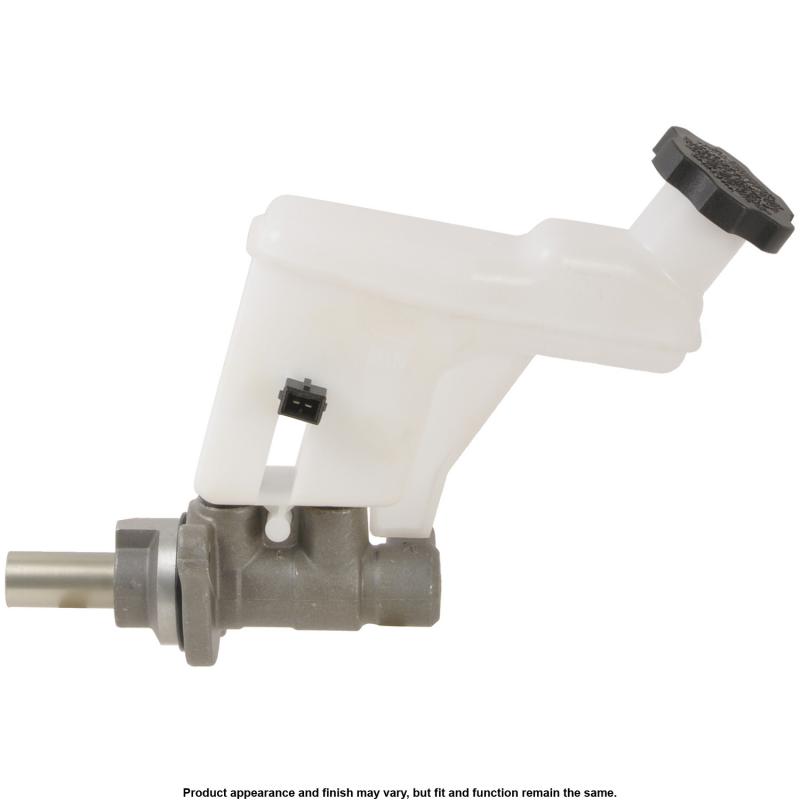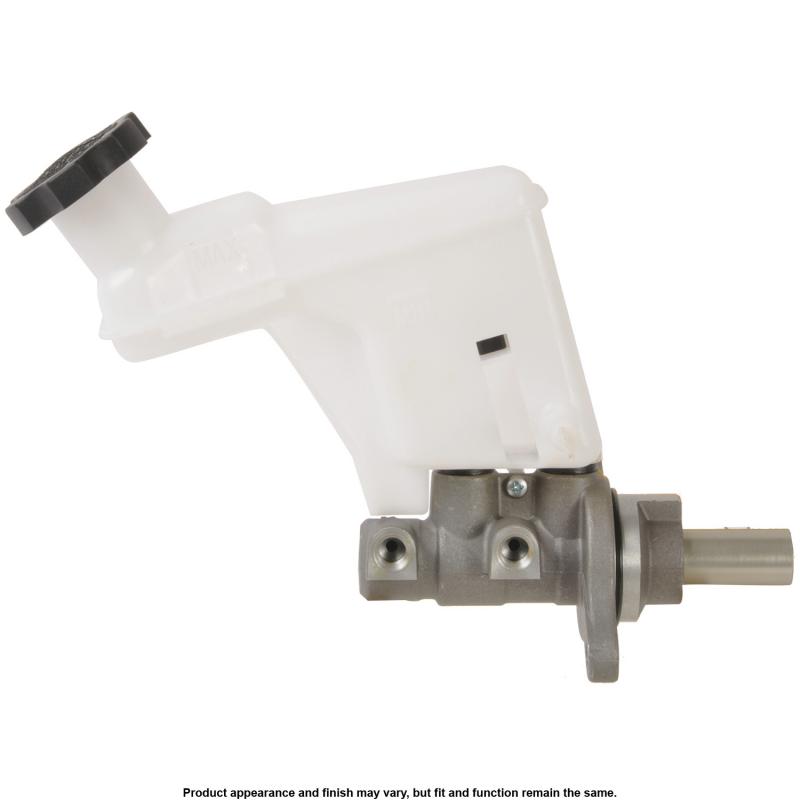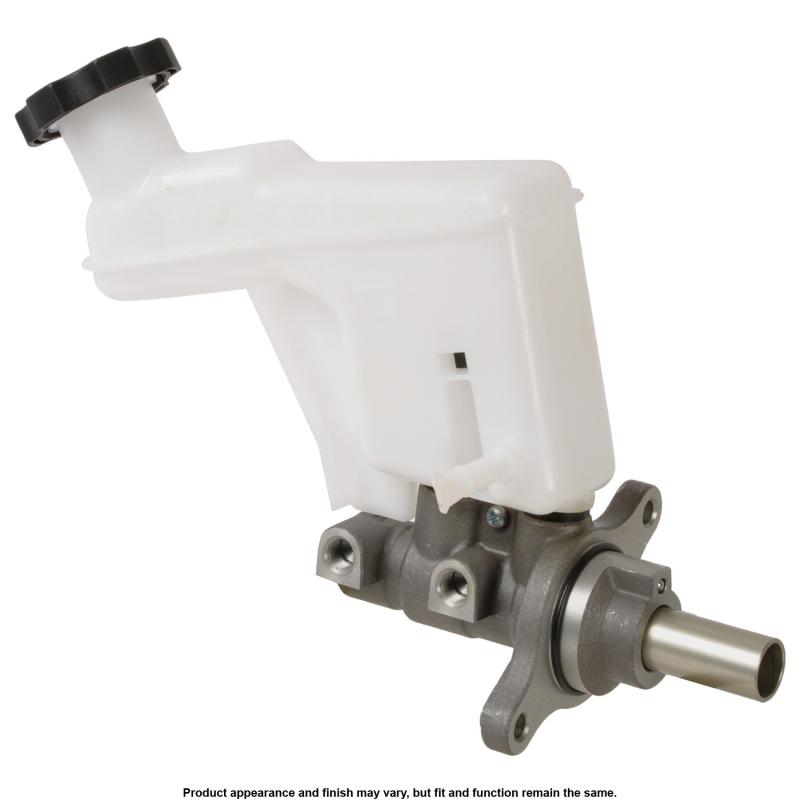Cardone Select 13-4390 Brake Master Cylinder






BRAKE MASTER CYLINDER
$208.86 CAD
Out of Stock
Brand: Cardone Select
Stock #: 134390
Condition: New
UPC: 884548155459
Weight: 2.4 lb.(1.1 kg.)
Dimensions: 12.3" x 8.5" x 7.9" (31.1 cm x 21.6 cm x 20 cm)
Accepted Payments: Visa, MasterCard, PayPal
- MOOG Chassis Products EV123
- NAPA Chassis Parts 2692861
- Transbec TEV440
- Mcquay-Norris ES4210
- Hyundai 585102S201
- Kia 585103W200
- Kia 585102S201
- Hyundai 585102S200
- Building on decades of experience using reverse engineering to remanufacture brake products, CARDONE engineers have meticulously designed our CARDONE New Master Cylinders to match O.E. performance. Supplied with new O.E.-quality seals and cups, each unit is endurance-tested to ensure perfect fit, function and reliable performance.
| Product Condition | New |
| FAQs | What type of fluid should I use: DOT 3, DOT 4 or DOT 5? |
| FAQs | As a rule, always use the brake fluid recommended by the O.E. which is stamped on the master cylinder lid. Note: Always use new fluid from a sealed container. |
| FAQs | What’s the difference between Dot 3, 4 and 5? |
| FAQs | Dot 3 and 4 are Glycol-based fluids and Dot 5 is a silicone-based fluid. |
| FAQs | Does a step bore style master cylinder require a specific bleeding process? |
| FAQs | The first step to bench bleeding a step bore is to slowly depress the master cylinder piston, then release slowly and wait 20 seconds before depressing again. NEVER pump piston/pedal with a step bore style master cylinder. Follow the same process on the vehicle. |
| FAQs | My original master cylinder leaked out of the back of the piston into the booster area. Why? |
| FAQs | Check booster for a defective push rod seal. If this seal is bad, it could drain the brake fluid out of the master cylinder. |
| FAQs | I replaced the master cylinder and now the pedal is high and hard. Why? |
| FAQs | The master cylinder is working correctly. Check for a faulty brake booster or frozen wheel cylinder/caliper. |
| FAQs | The brake pedal is low and spongy. Is it a bad master cylinder? |
| FAQs | First, check for air in the system. Make sure master cylinder is level when bleeding. Air will compress in a hydraulic system causing a low pedal. Then, check for brake hose swelling or expanding under pressure. Next, check brake drums/discs for proper specifications. Finally, check brake material. |
| FAQs | One side of my front brakes won’t release, why? |
| FAQs | This is caused by a problem with the caliper or a brake hose. |
| FAQs | What causes the car to pull to one side during braking? |
| FAQs | Check the steering and suspension. Inspect both calipers for binding or sticky slides or pins. Check brake lining for oil/grease or uneven wear. Inspect brake hoses for restriction. Check for proper tire pressure. |
| FAQs | What causes the brakes to lock up after only a couple of miles? |
| FAQs | Replace all brake fluid. Brake fluid is hygroscopic which means it absorbs moisture. Too much water in brake fluid will cause vapor lock and apply pressure to the wheels. Also check for proper push rod adjustments and stop light/cruise control switch adjustments. |
| FAQs | Why is the piston stuck inside the bore of my master cylinder? |
| FAQs | Most likely, the fluid in the system is contaminated. The most common form of contamination occurs when petroleum-based fluid has been accidentally introduced into the brake system. If that has happened it is almost certain that all rubber components in the brake system (hoses, seals, bladders) will need to be replaced after the system is thoroughly flushed. If the contamination is due to moisture, rust and/or dirt, it might be possible to restore operation by flushing the system and replacing the brake fluid with fresh, clean fluid. Always use the manufacturer-recommended brake fluid from a sealed container. |
| FAQs | How can I test a master cylinder to see if it's bypassing? |
| FAQs | Simply plug the master cylinder ports and press the brake pedal. If the master cylinder is bypassing, the pedal will go down. If the pedal stops hard, the master cylinder is OK. |
| Features and Benefits | Only O.E.-quality seals and cups are used to ensure O.E. performance and reliability. All rubber components meet S.A.E. specifications |
| Features and Benefits | Mounting hardware and bleeding kits are supplied with every unit to make the installation and bleeding process faster and easier (where applicable) |
| Features and Benefits | Bores meet critical micro-finish specifications to eliminate pitting and corrosion, a cause of premature failure |
| Features and Benefits | Castings feature a premium protective coating to minimize corrosion and extend unit life |
| Features and Benefits | Seals are temperature-cycled from -30 F to +220 F to ensure reliable performance during your daily commute |
| Features and Benefits | Plastic reservoirs are vacuum-tested to ensure they are leak free |
| Port Quantity | 2 |
| Primary Port Size | M12 x 1.0 |
| Secondary Port Size | M12 x 1.0 |
| Master Cylinder Color/Finish | Gray |
| Reservoir Included | Yes |
| Reservoir Material | Plastic |
| Reservoir Type | Single |
| Master Cylinder Material | Aluminum |
| Mounting Hole Quantity | 2 |
| Bore Diameter (N) | 0.875" |
| Pedal Rod Included | No |
| Installation Hardware Included | No |
| Package Contents | Master Cylinder |
| E-Waste | No |
| UPC | 884548155459 |
| Origin Country: | CN |
| Weight: | 2.4Lb. (1.1 kg.) |
| Package Dimensions: | 12.3" x 8.5" x 7.9" (31.1 cm x 21.6 cm x 20 cm) |
1 Year Warranty
